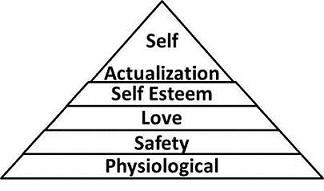We spend a lot of time and effort training our teams and developing them in our culture and so the retention and ongoing development of our talent is critical. But to retain and continue to develop our teams does not just mean spending more money, which in this economy we don’t have. Treating people with respect and listening to them has a huge impact.
So often it can be a zero cost issue to recognize and reward our team for their outstanding efforts. Simple efforts such as establishing annual awards to recognize the efforts and talents of you team can be greatly appreciated. There are other cost free opportunities such as cross training and job rotation which are perfect ways to provide development opportunities. This can become a key way to develop your future leaders and should be directly linked to succession planning. Why not create process improvement teams to provide opportunities to develop teamwork, leadership and facilitation skills. It is also important to mentor your future leaders so that when the market returns you have a new group of leaders and supervisors.
You really need to listen to what your team is saying, not just paying lip service. Do you conduct regular anonymous satisfaction survey so you KNOW what they are thinking and need? This need not be expensive at all. You can create your own simple hard copy surveys with only a few key questions with a 1-5 rating and 2-3 open ended questions asking for details on how you can improve. Or to create more flexibility you can create and distribute your own surveys for free online via such services and zoomerang.com. They will also automatically create charts of the results. The key is to be prepared for feedback that you may not like and to act on the results showing that you did listen and reacted in a positive way. This will ensure that you will continue to get open and honest feedback the next time you conduct a survey.
As you consider how to manage your team it is useful to review the fundamentals, Maslow’s Theory of Human Motivation or Hierarchy of Needs. This points out that there are layers to motivation, starting with the obvious of paying your employees, then the level security of employment, creating a real sense of team and culture, appreciation and finally achievement. There are a wide range of options available.
Self-Actualization
To realize your full potential and goals
Self Esteem
Respect, recognition and appreciation
Love
To feel as though you belong, to have relationships
Safety
To have security, a predictable future
Physiological
The basic needs of life, food, a home and comfort
Below is a list of best practices for employee engagement as recommended in a 2010 Best Practices Study ‘Rewarding, Engaging and Retaining Key Talent’ by APQC.
Which are you using and which could you consider adopting?
Best Practices for Talent Management and Employee Engagement
Recruiting/ Employment branding/ Communication
- Create and communicate a formal employment brand to employees.
- Externally brand the organization as an employer of choice, and seek external validation (awards as best place to work or best place for leaders).
- Employ extensive and early outreach to potential talent pools in local communities, schools and universities, and globally (where applicable).
- Allow employees the opportunity to be heard informally via social media channels and formally via grievance redressing programs.
Selection
- Leverage high-potential or high-value talent to recruit and select new-hire candidates.
- Use like-talent to recruit like-talent (e.g., technical talent to recruit technical talent).
- Hire for attitude/passion, and train for talent.
- Train managers and leaders on principles of employee engagement.
- Teach new managers and supervisors the fundamental concepts of talent management.
- Make engagement easy and accessible by providing centralized tools and templates online.
- Invest in formal entry-level or onboarding training to engage new employees.
- Provide meaningful and customizable career paths for employees that allow for a sense of purpose and direction in the organization and provide an element of challenge to employees’ jobs.
Leadership and high-potential development
- Have senior leaders serve as executive champions of and role models for employee engagement.
- Offer structured leadership development including personal development plans, action learning, leaders teaching leaders, a focus on real-world business challenges, mentoring, coaching, 360-degree feedback, executive development, and networking with senior executives.
Succession planning
- Regularly identify high-value or high-potential talent.
- Give primary emphasis on internal promotion and mobility.
Rewards and recognition
- Create a culture of rewards and recognition.
- Offer fair total compensation and benefits, as determined by employee feedback and external benchmarking.
- Budget for employee rewards and recognition.
Go beyond exit interviews
- Find out what motivates high-value employees individually through regular, in-depth conversations with them (beyond the annual performance appraisal) while they are still employed.
- Anticipate unwanted turnover and take preventive steps to mitigate it.
- Provide customized reward, recognition, and retention practices to key or high-potential talent, and even the work force at large, where possible.
- Take a holistic employee view of the work/life balance.
Work force analytics/ Management
- Gather employee feedback from multiple listening posts (employee opinion surveys, town hall meetings, field site visits, social media, employee suggestion programs, HR audits, etc.). Employee feedback data should be analyzed and prioritized. Action plans should result from the data.
- Leverage online portals where managers and supervisors can easily access HR dashboards with key employee metrics and access the status of responses to employee feedback information.
Performance evaluation/ Management
- Align individual performance with organizational performance.
- Hold managers and senior leaders accountable for action plans resulting from employee feedback.
- Include “engage employees” in leadership and managerial competencies.
- Reward employees based on performance.
- Correlate engagement levels with real business outcomes and communicate the results.



